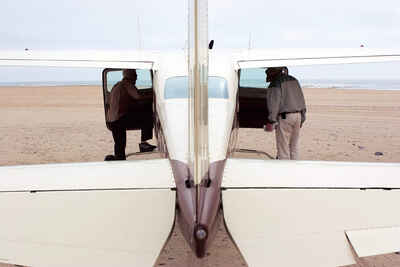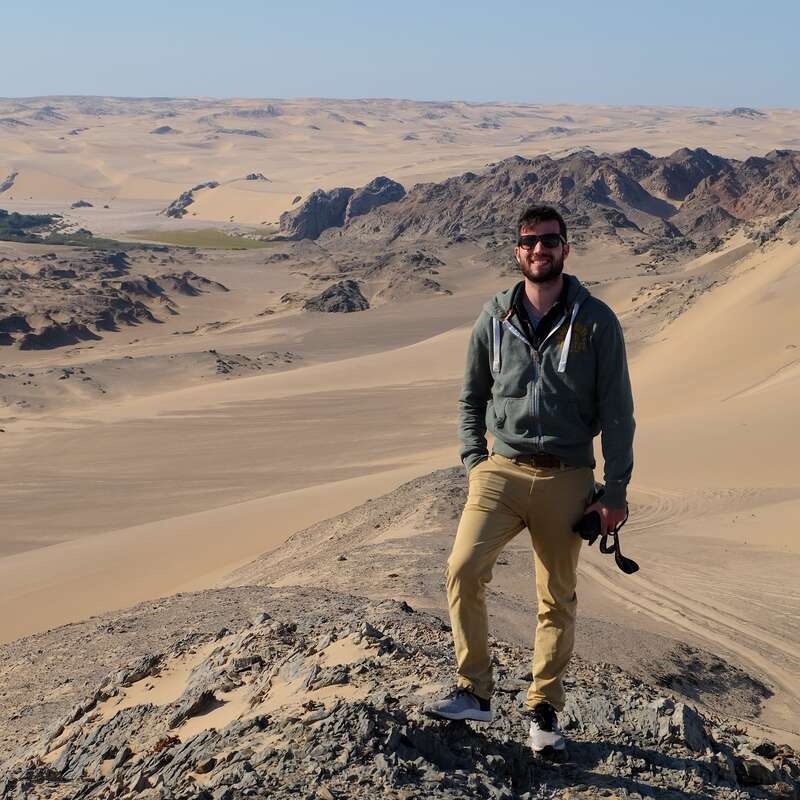About Kunene River Camp
Perched on the rocks high above the Kunene River, your small tent feels dwarfed by the surrounding grandeur.
Below, the perennial waters that form the border with Angola flow relentlessly towards the Skeleton Coast, a mecca for birds and animals. Behind rise gravel plains, for the river fringes the desert lands of northern Namibia.
At Kunene River Camp, on the final night of a Skeleton Coast Safari, the setting is integral to your stay. In the hands of the Schoeman family, whose entire lives have been immersed in this harsh environment, you’ll learn to understand and interpret through their expert eyes.
The camp itself is deceptively simple. Dome tents set within reed-and-pole enclosures make scarcely a dent on the landscape. Yet comfortable twin beds, a bedside table and an en-suite bucket shower ensure that creature comforts are not forgotten.
There’s a campfire for warmth and convivial drinks, a central table for dinner under the stars, and a help-yourself bar that instils a sense of belonging.
Explore the river by boat, watching out for monitor lizards and crocodiles basking on the banks. Take in the impressive birdlife – both desert and riverine species – and above all, enjoy the last chance to savour this extraordinary adventure through Namibia’s most challenging and diverse environment.
Our view
To round off a tour of the Skeleton Coast at Kunene River Camp is to round off an in-depth exploration of this wilderness area. Like its sister camps, it is simple yet comfortable, but what really matters is the excellent guiding on these trips as you explore all that the Skeleton Coast has to offer.
Accommodation
8 tents
Children
Best for 16+
Open
All year
Activities

4WD Safari

Birdwatching

Boat trip

Cultural excursion

Private activities
Traveller reviews of Kunene River Camp
1 real, un-edited reviews from Expert Africa's travellers.
Arrived 3 Oct 2007, 1 nights
"Kunene River Camp review"
Overall rating: Excellent
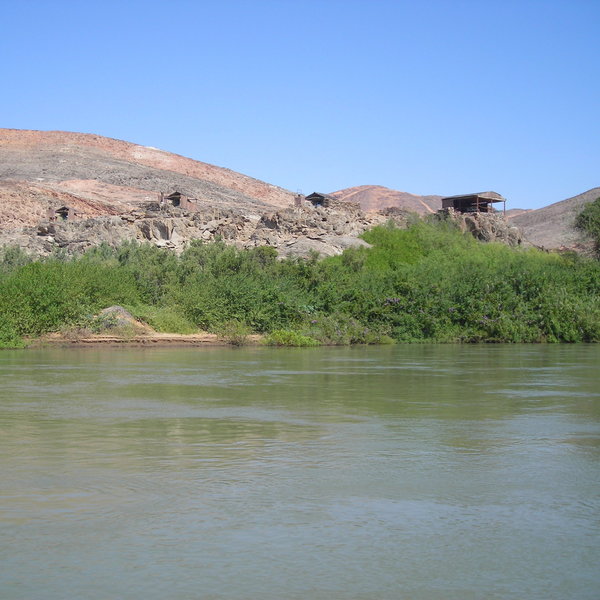
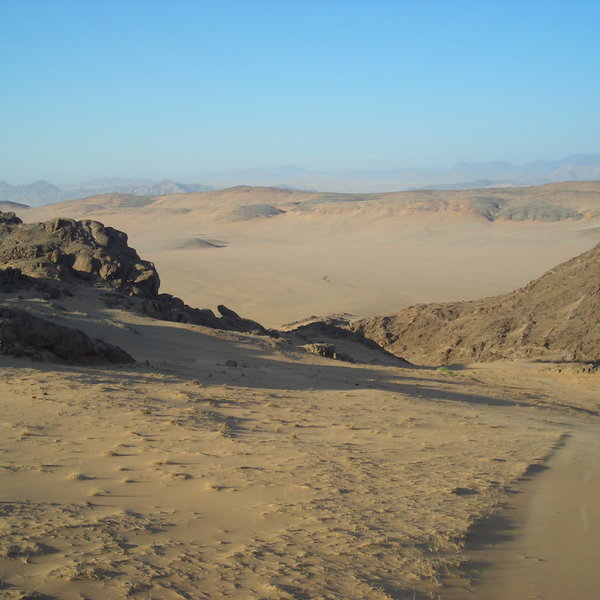
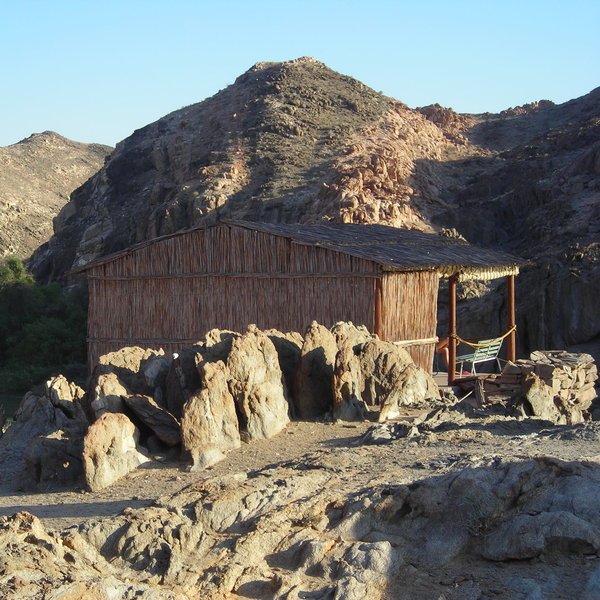
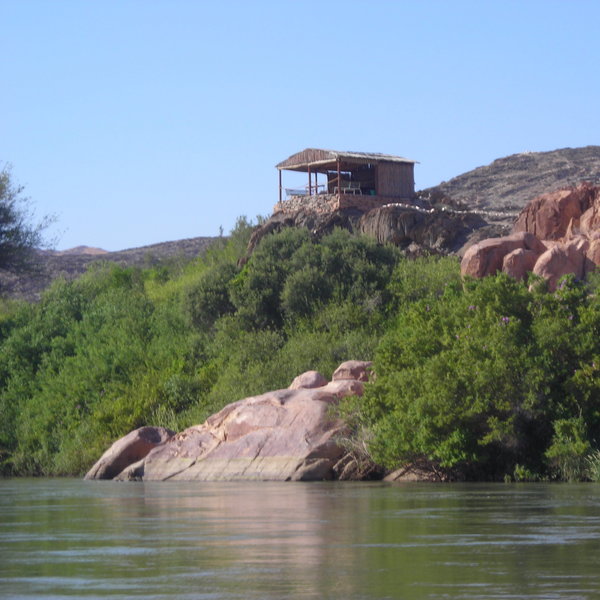
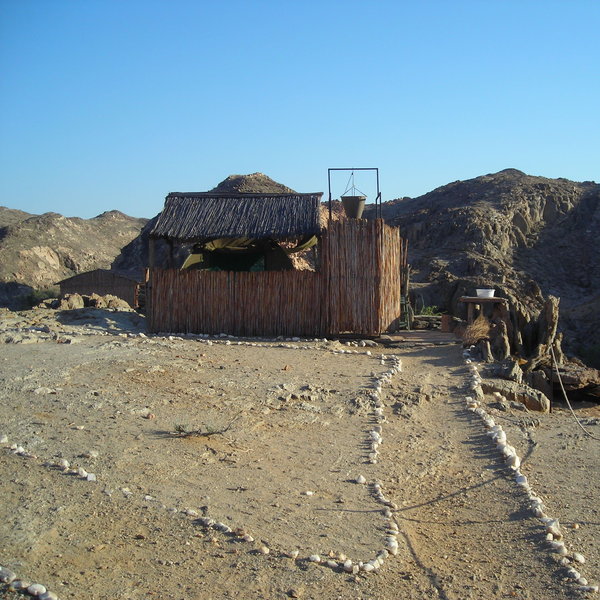
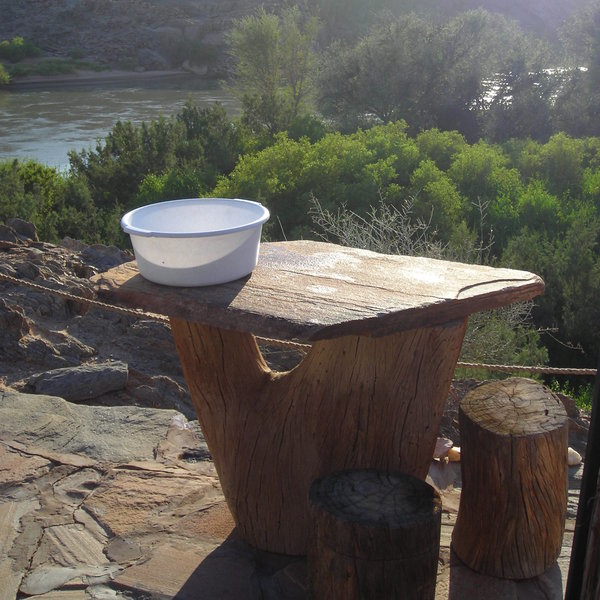
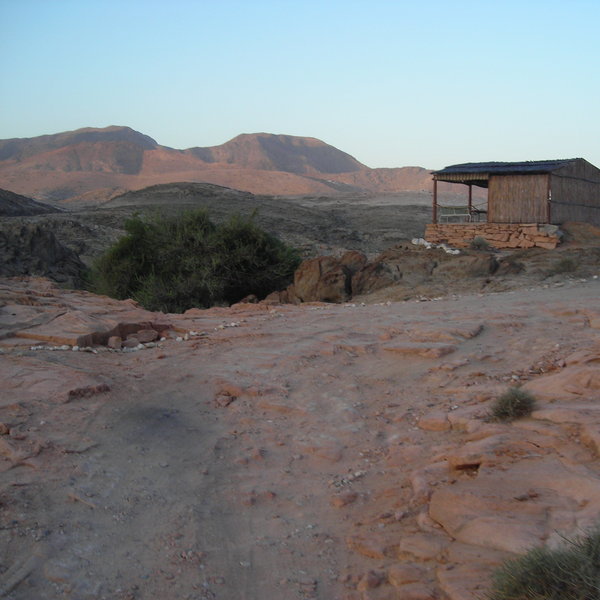
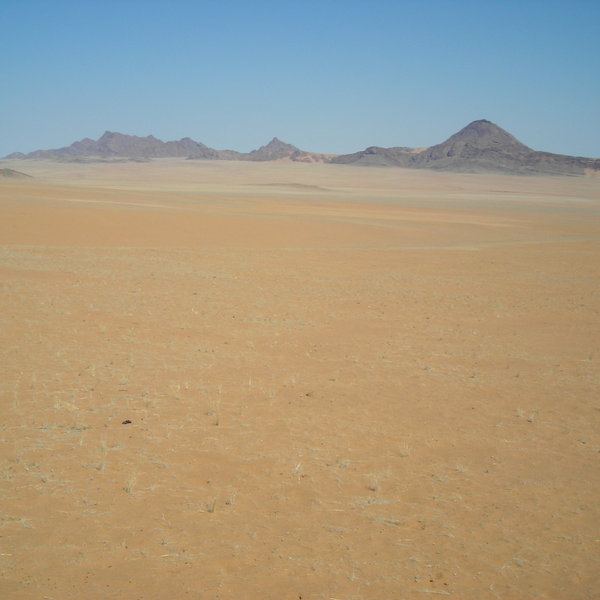
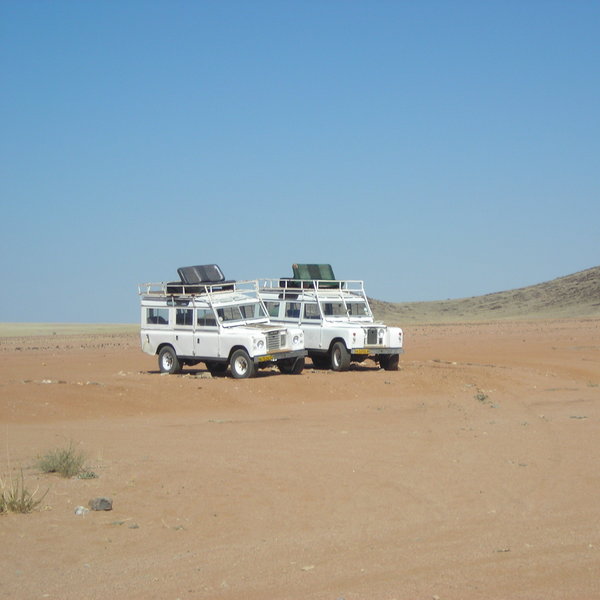
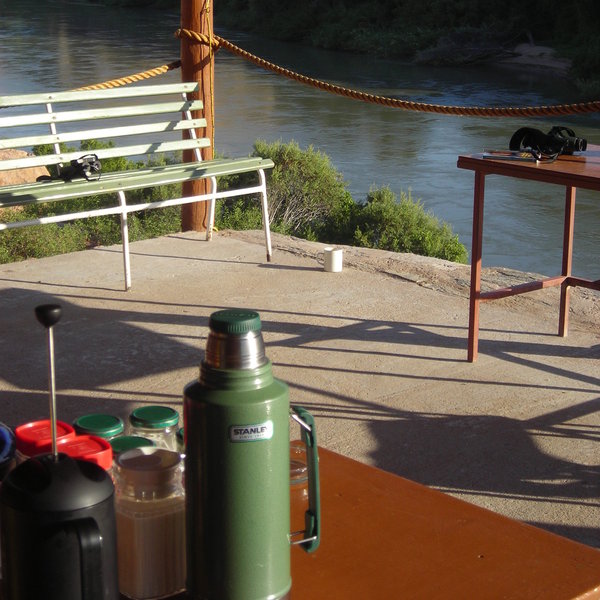
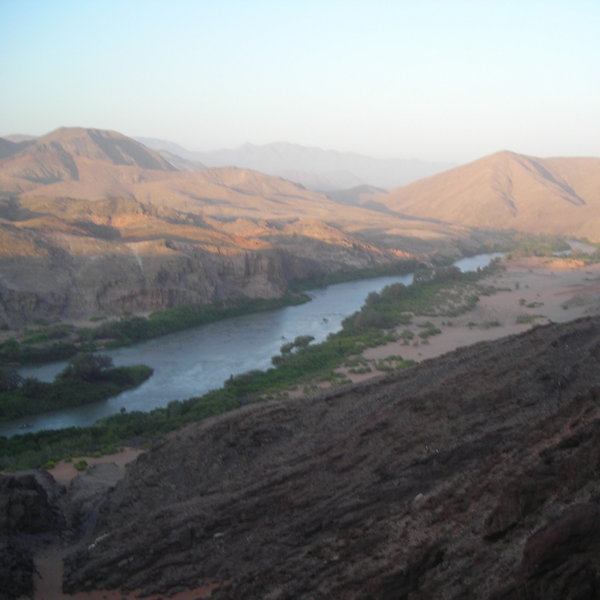
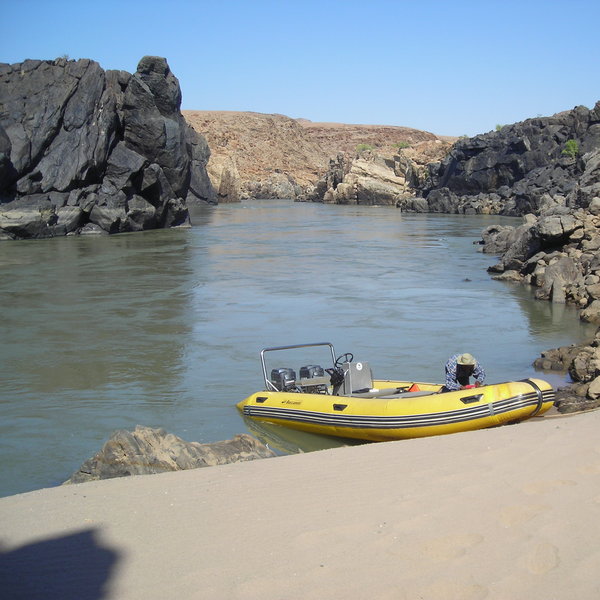
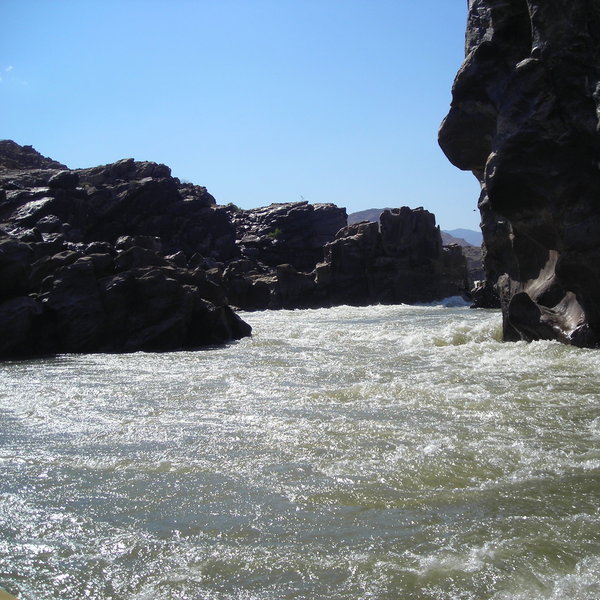
Expert Africa's gallery
When we travel we take lots of photos ourselves to give you a real and un-edited view of the safaris. See our 32 pictures and 1 videos of Kunene River Camp to get the candid view.
View gallerySafaris visiting Kunene River Camp
Just ideas, we'll always tailor-make a trip for you
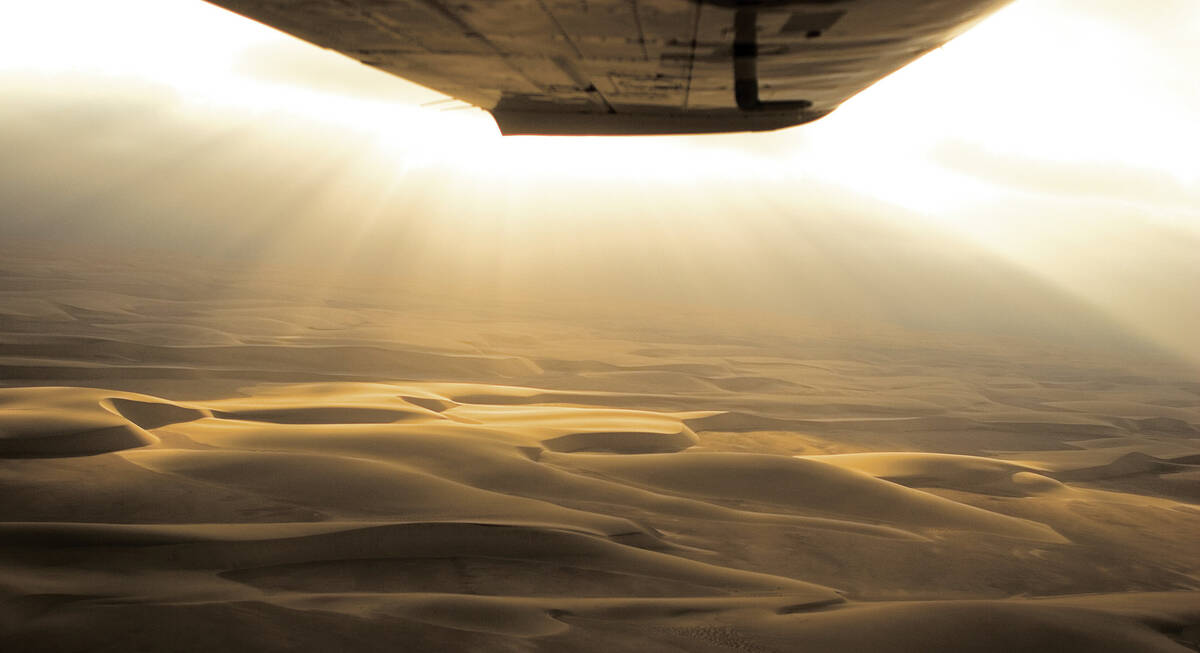

Skeleton Coast Safari
5 days • 5 locations • 1 country
WINDHOEK AIRPORT TO WINDHOEK AIRPORT
An epic flying safari exploring some of Namibia’s most spectacular and remote wildernesses. Exceptional pilots, among the best guides in the country and exclusive camps – this a real bucket-list adventure.
Visiting Skeleton Coast, Windhoek
US$10,990 - US$14,500 per person
Kunene River Camp: Our full report
On the banks of the Kunene River, Namibia’s northern border with Angola, lies the simple Kunene River Camp.
As one of Namibia’s few permanent rivers, the Kunene is a magnet for wildlife, especially birds. The camp is accessible only on a Skeleton Coast Safaris, run by the Schoeman family, and is usually the third and final camp on one of their trips.
Visitors at Kunene River Camp usually arrive in late afternoon, having spent the first night of their trip at Kuidas Camp, and left its sister camp, Leylandsdrift Camp, mid-morning.
The day is spent flying north along the Skeleton Coast by light aircraft to the Kunene River, before transferring to a 4WD for the spectacular drive through the Hartmann Valley. Adventurous travellers may choose to ride on the vehicle’s roof-top seats which, although exposed to the wind and sun, offer great views. With mountains, sand dunes and vast gravel plains all around, you get a true feeling of the enormity of the place and of its complete and utter isolation.
It would be hard to beat the location of Kunene River Camp, perched on top of large boulders just above the riverbank, which is a haven for wildlife. Like the other camps on a Skeleton Coast Safari, it is simply designed yet comfortable and well equipped.
Each of the eight dome tents lies within a reed enclosure. Inside, proper twin beds made up with neutral-coloured linen are separated by a bedside table with a battery-powered lamp, bottled water and tissues. The camp has two flush toilets with handbasins for communal use, but a chemical toilet at the foot of one of the beds means that it isn't necessary to leave your tent at night if you don't want to.
Housed in the same reed structure is an en-suite bucket shower with hot water provided on request. Shampoo/shower gel and insect-repellent cream are supplied, as – of course – are towels. In front of the tent, a stone table is set with a bowl for washing, and a stool, with great views of the river below.
The central area at Kunene River Camp is constructed from local materials – stone, wood and reeds. This is where meals are served, and where you’ll find a small help-yourself “bush bar” with a choice of drinks.
The building is open at the front and partially at the sides, giving great views along the Kunene River and across to Angola. Sitting here on our last visit we saw some great birdlife, including goliath herons, African darters, red-faced mousebirds and golden oreoles.
The next day, you’ll take a boat trip along the Kunene, passing sandy banks and lush vegetation which harbours monitor lizards and crocodiles. Further upstream are some gentle rapids and some interesting geological formations. We were impressed by the bird sightings, from gymnogene and augur buzzard to Abdim's stork, wire-tailed sparrow and little bee-eater.
After lunch back at camp, visitors usually head back to the airstrip for their flight back to Windhoek, arriving late afternoon.
Activities
4WD Safari
Birdwatching
Boat trip
Cultural excursion
Private activities
Families & children
- Attitude towards children
- Children are always welcomed by the Schoeman family.
- Property’s age restrictions
- None
- Special activities & services
- None
- Equipment
- None
- Generally recommended for children
- Older children with a genuine interest in the natural world are likely to enjoy Kunene River Camp, but long days and extensive flying are likely to prove both unappealing and tiring for younger children.
- Notes
- Proximity to the river at this camp and the presence of crocodiles on the river bank means that children must be under constant supervision from a parent or guardian.
Food & drink
- Usual board basis
- Full Board & Activities
- Food quality
- Food at Kunene River Camp was very tasty when we last stayed, and was washed down with some good wine.
The buffet breakfast is a choice of cereal, fruit, yoghurt and mealie pap, as well as freshly baked bread with jam, cold meat or cheese.
Lunch usually consists of a buffet with salad dishes.
For dinner, we tucked into a lovely lamb stew with rice, peas and a green salad. - Dining style
- Group Meals
- Dining locations
- Outdoor Dining
- Drinks included
- All drinks are included except imported wines and spirits (and any premium brands).
Bottled water is provided, and filtered or borehole water is also available.
Getting there
- Location
- Skeleton Coast & Kaokoland, Namibia
- Ideal length of stay
- Most visitors stay only one night at Kunene River Camp, although it is possible for a group of four people travelling together to extend their stay by prior arrangement, as this is the last stop on a Skeleton Coast Safari.
- Directions
- Accessible on a fly-in safari only
- Accessible by
- Fly-and-Transfer
Special interests
- Birdwatching safaris
- Kunene River Camp on the banks of the Kunene River is a highlight for birdwatching in Namibia. You can expect both desert and riverine species here, from buzzards and gymnogene to kingfishers and bee-eaters, with aquatic birds also in their element.
- See ideas for Birdwatching safaris in Namibia
- Photography safaris
- Aerial images from a light aircraft of the ever-changing landscapes on a Skeleton Coast Safari can be superb. Around Kunene River Camp, a wide diversity of birds, animals and geology offer further scope for photography in Namibia.
- See ideas for Photography safaris in Namibia
Communications
- Communications
- There is no mobile reception or WiFi; aside from a satellite phone for emergencies, you will be out of communication.
- TV & radio
- None
- Water supply
- Other
- Water supply notes
- Water is drawn from the river and filtered. Bucket showers are supplied with hot water on request. The camp has two flush toilets, as well as a chemical toilet in each tent.
Health & safety
- Malarial protection recommended
- Yes
- Medical care
- There are doctors in the nearest town, which is most easily accessed by air.
- Dangerous animals
- Moderate Risk
- Security measures
- Your guide will accompany you throughout the day, with camp staff also staying overnight.
- Fire safety
Useful info
- Disabled access
- On Request
- Laundry facilities
- Laundry can be done if urgent, but normally time will not permit this.
- Accepted payment on location
- Cash will be needed for any staff tips.
Plan and book your trip with Expert Africa
All of our trips are tailor-made, so we'll always adapt them to suit you. Talk to an Expert and let us plan and arrange your perfect trip.

Talk to an Expert
Call or email us now! We’ll match you with the Specialist in our team who is best suited to help you. Then together we can start planning your trip.

Set up your itinerary
Based on our experience and your ideas, your specialist will create a detailed, costed itinerary. We’ll refine it together, until we have a trip that you’re perfectly happy with.

Prepare for your trip
The same Specialist will make the seamless arrangements for your trip, send you detailed travel documents, and be available to answer any questions before you depart.

Travel with peace of mind
After you set off, you’ll be cared for by our partners in Africa, most of whom have worked with Expert Africa for decades. And if you ever need us urgently, we’re available 24/7.

When you return
We love to learn about your trip, and so will always be grateful if you’ve the time to give feedback to your Specialist when you return.
Kunene River Camp's location
Look closer at the environment and surroundings of Kunene River Camp.
Other lodges in Skeleton Coast & Kaokoland
Alternative places to stay in this same area.
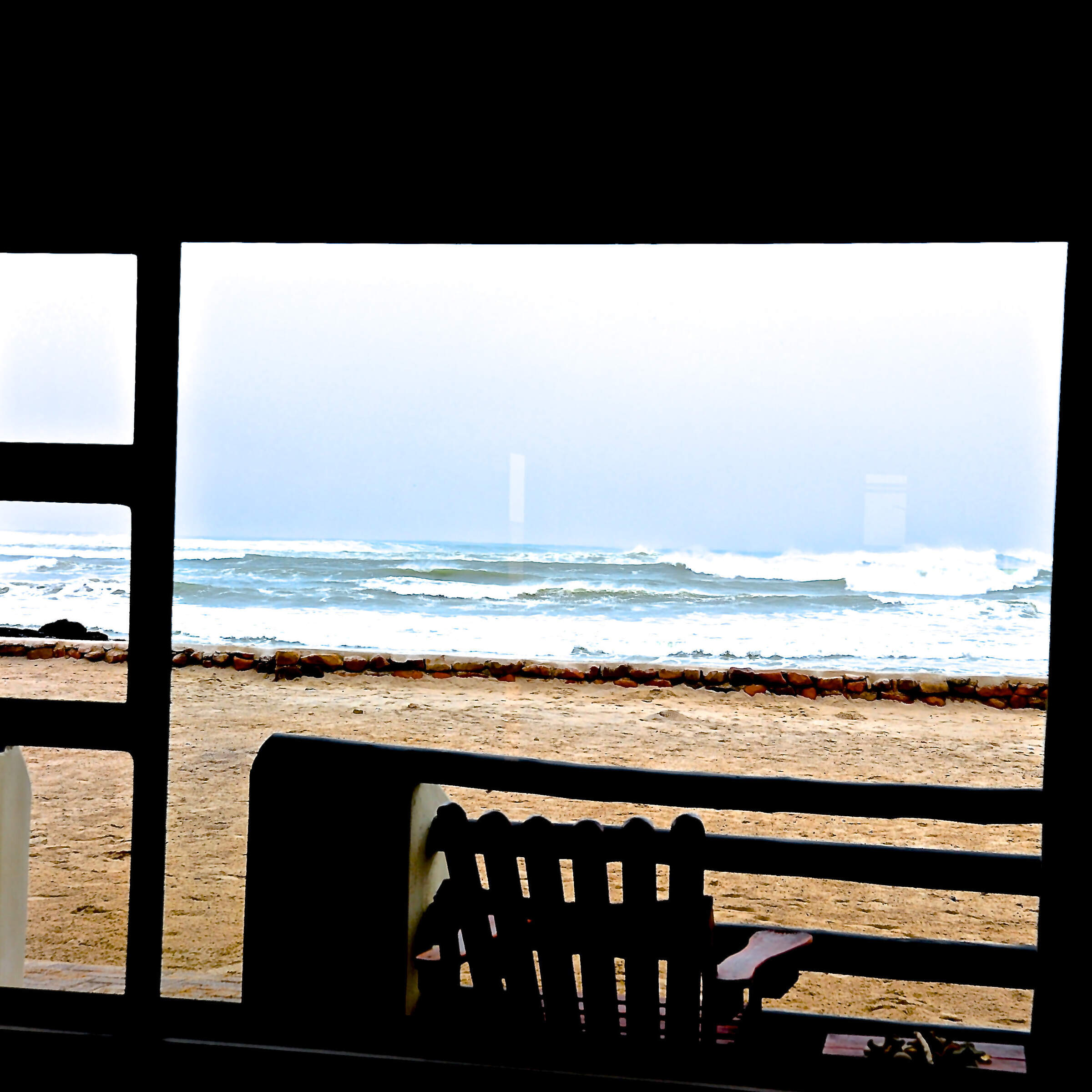
Cape Cross Lodge
Right on the Skeleton Coast, between Swakopmund and Damaraland, Cape Cross Lodge has easy access to Cape Cross Seal Reserve.
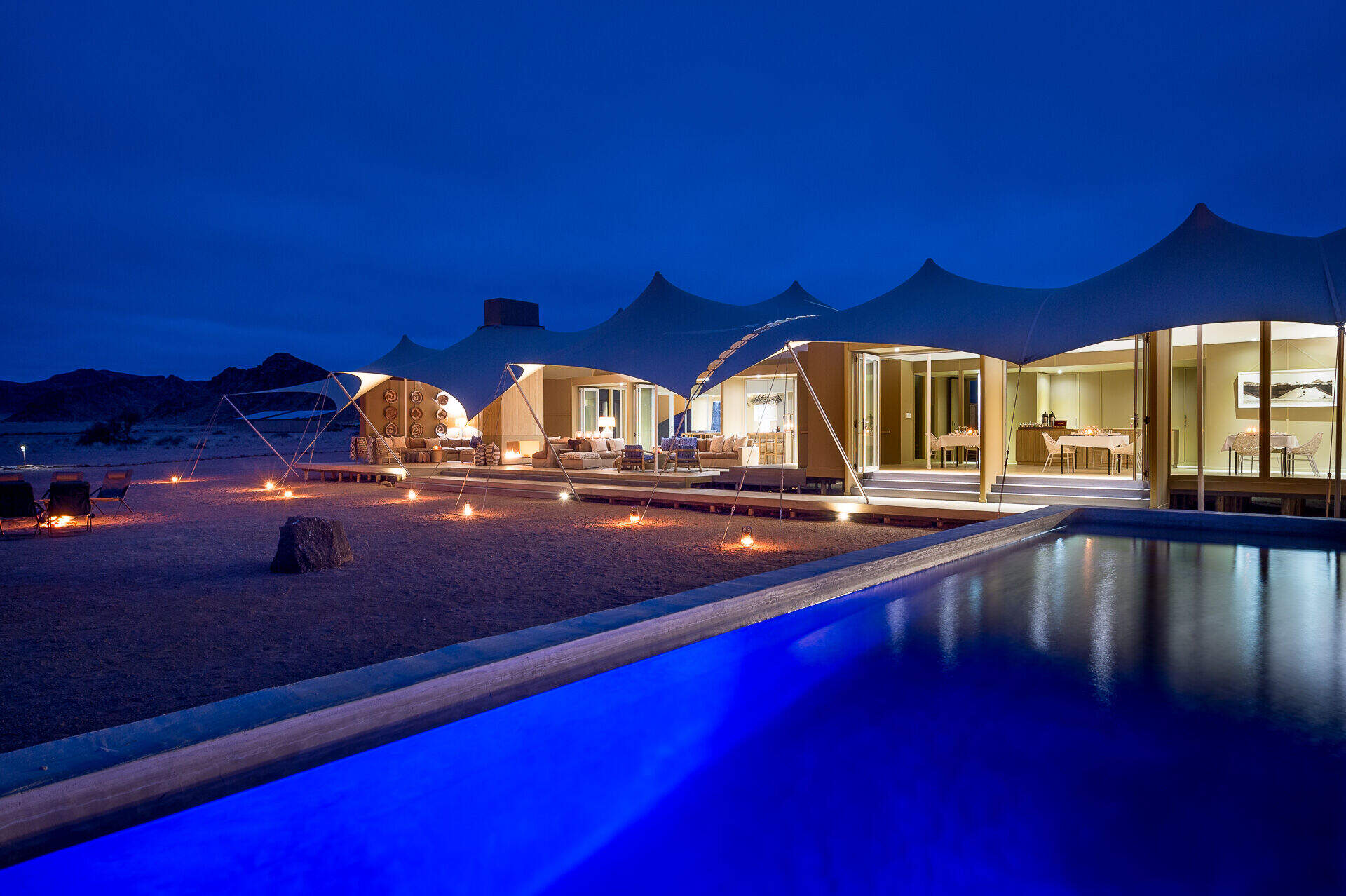
Hoanib Skeleton Camp Camp
Hoanib Skeleton Coast Camp is actually situated 42km inland in Kaokoland, this said they offer a superb guided day trip to the coast.
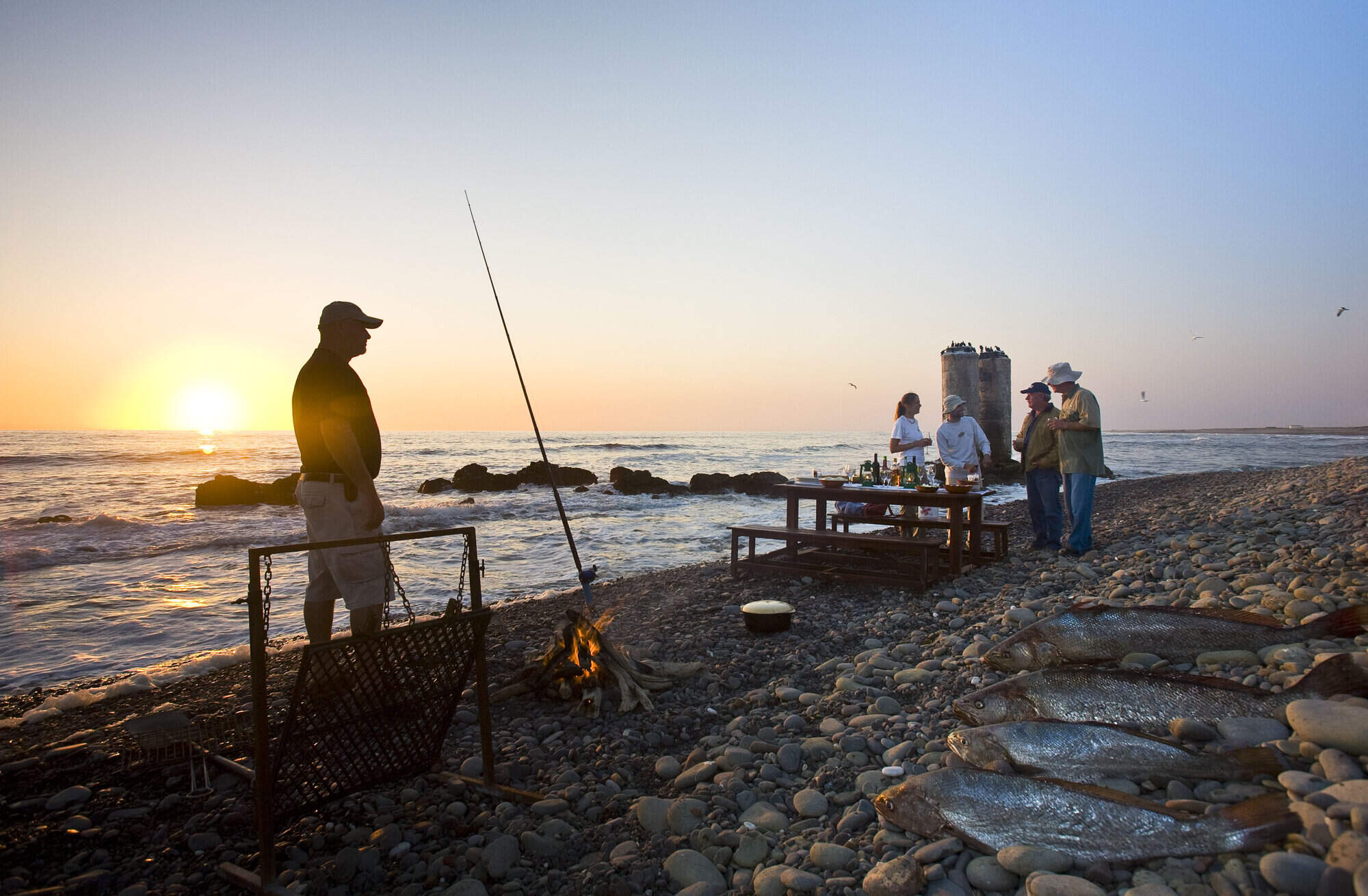
Terrace Bay
Terrace Bay is bleak. However, those that stay here come to experience the remote and inhospitable nature of the Skeleton Coast.
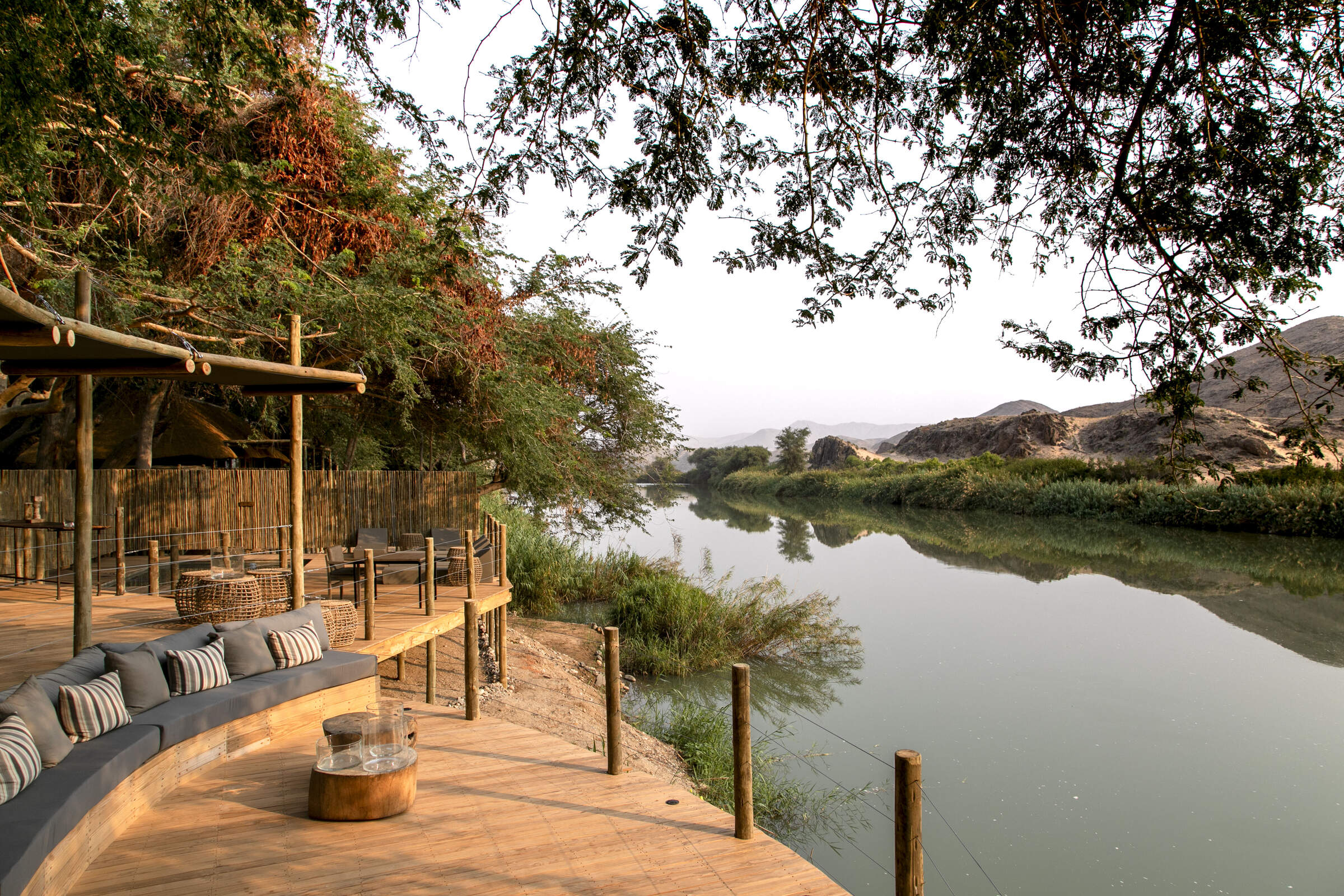
Serra Cafema
The luxurious Serra Cafema is in the most remote corner of Namibia - at the north end of Hartmann's Valley, across the Kunene River from Angola.
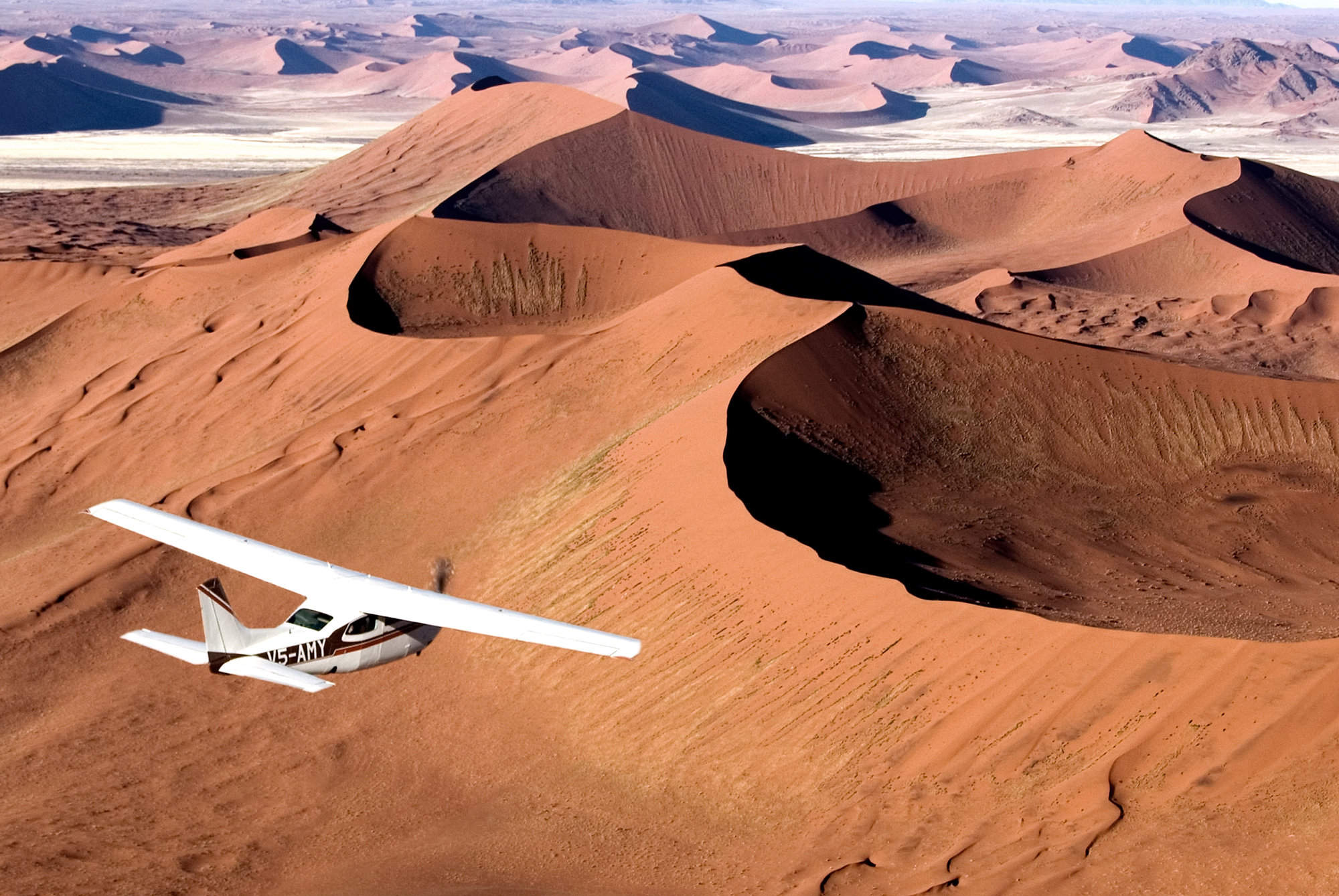
Skeleton Coast Safaris
Skeleton Coast Safaris is a small, family-run operation that has organised inspirational trips to this remote area of Namibia for nearly 50 years.
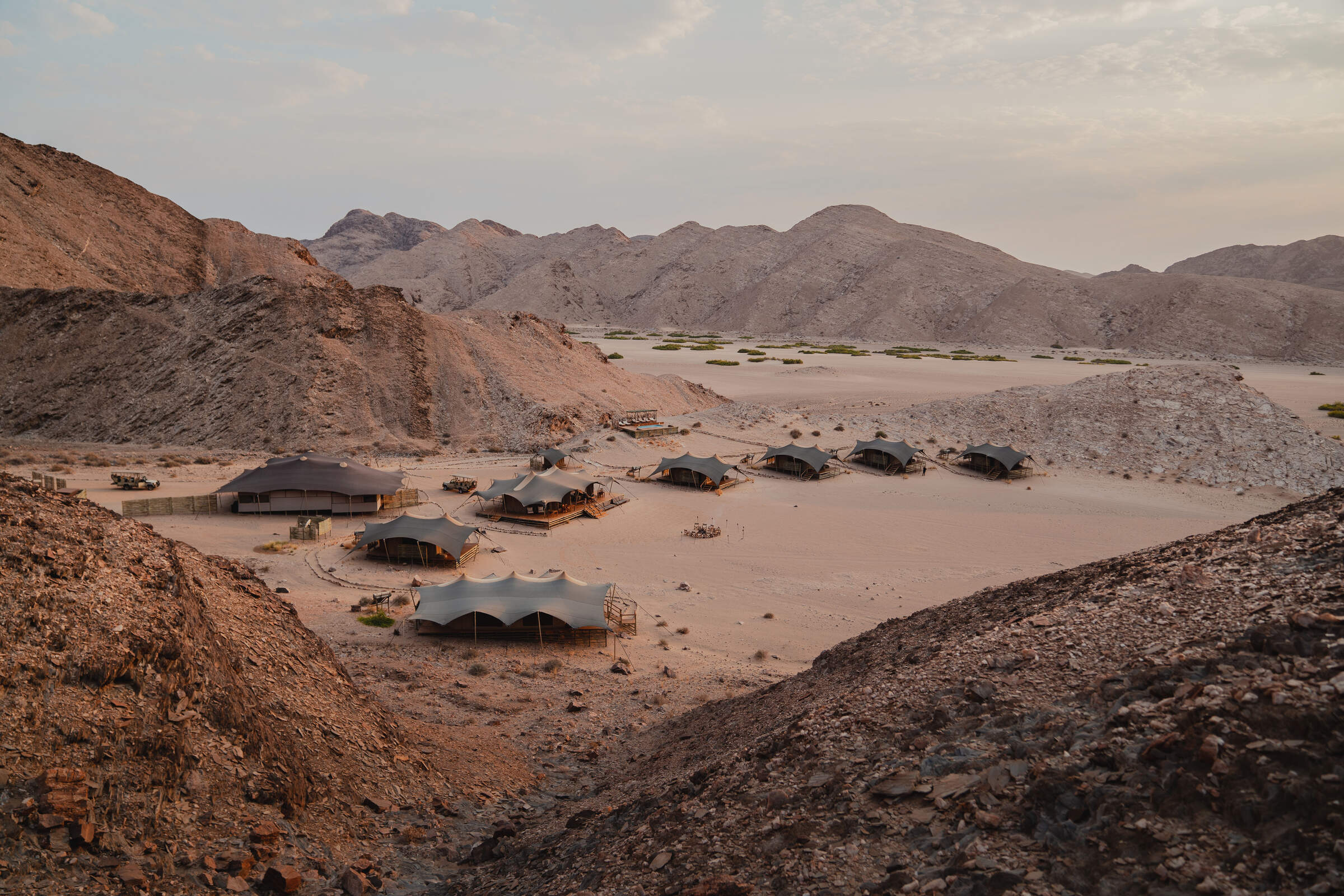
Hoanib Valley Camp
The intimate and remote Hoanib Valley Camp offers a rare chance to explore this dramatic corner of Namibia and to search for its sparse desert-adapted wildlife.
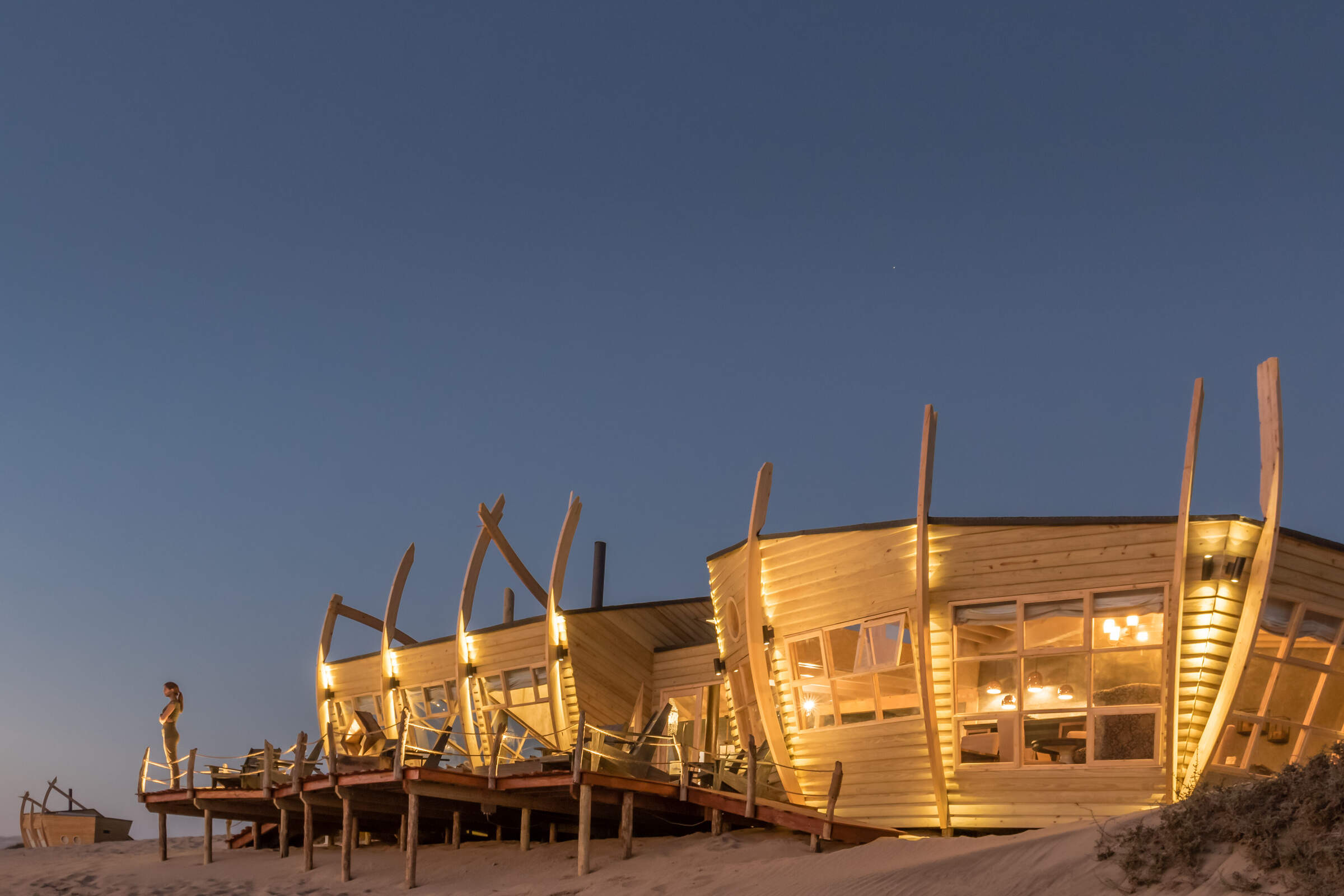
Shipwreck Lodge
The only property on this desolate stretch of coastline, the extraordinary Shipwreck Lodge opens up a new section of the Skeleton Coast National Park
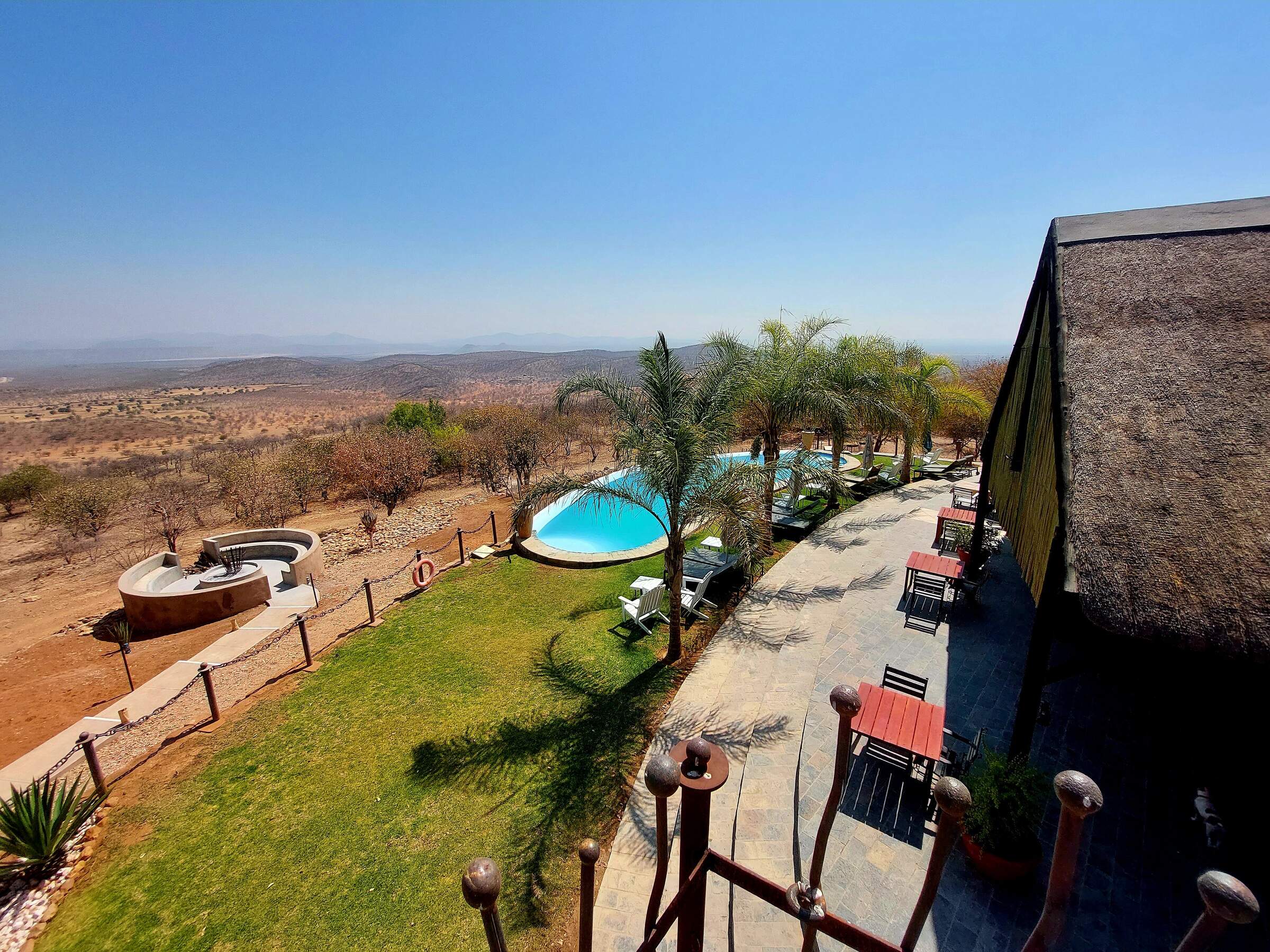
Opuwo Country Lodge
Opuwo Country Hotel provides comfortable accommodation is well situated for a night's stop before travelling into remote parts of Kaokoland.
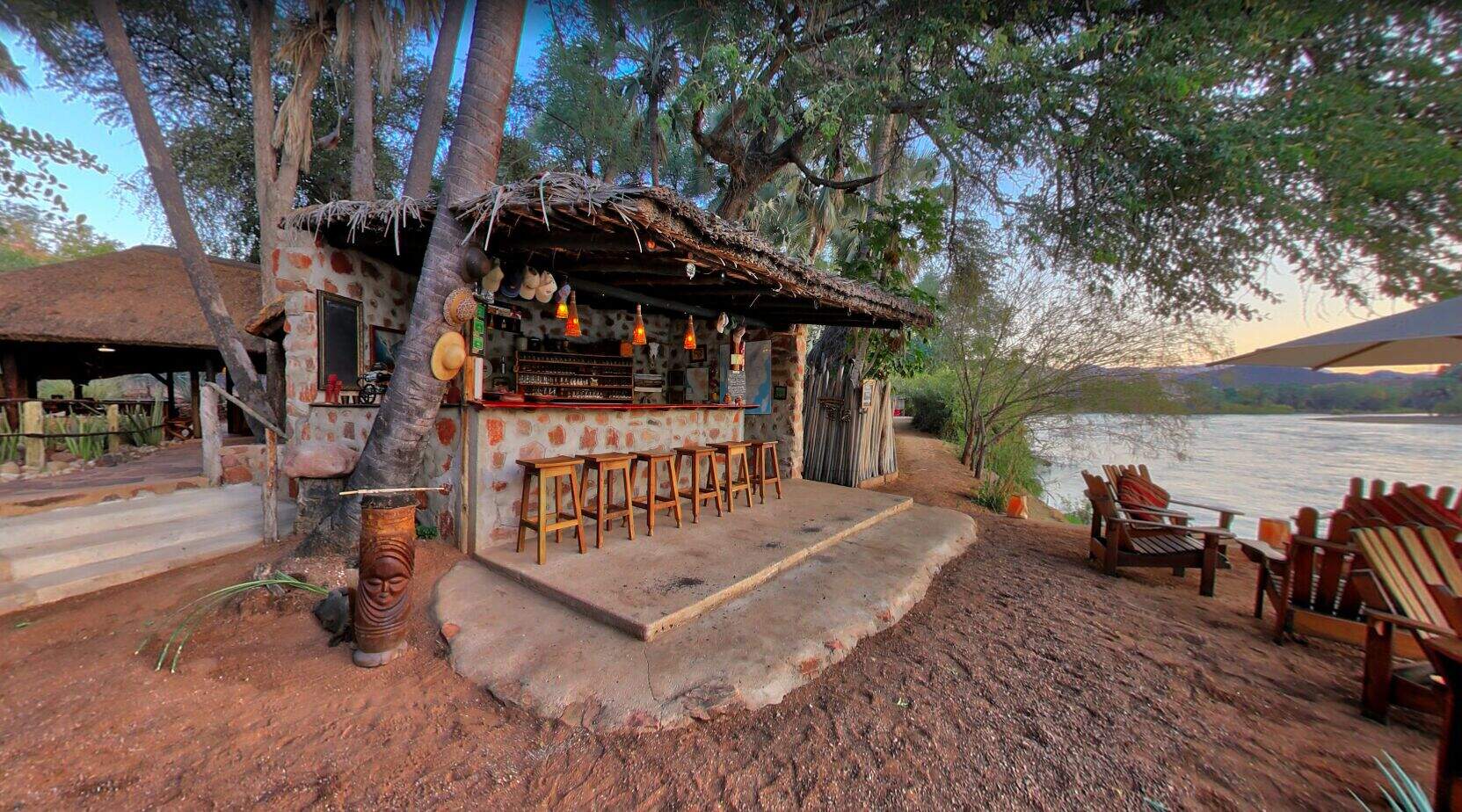
Epupa Camp
Epupa Camp is a welcoming oasis set on the palm-fringed banks of the Kunene River in north-west Namibia and close to Epupa Falls.
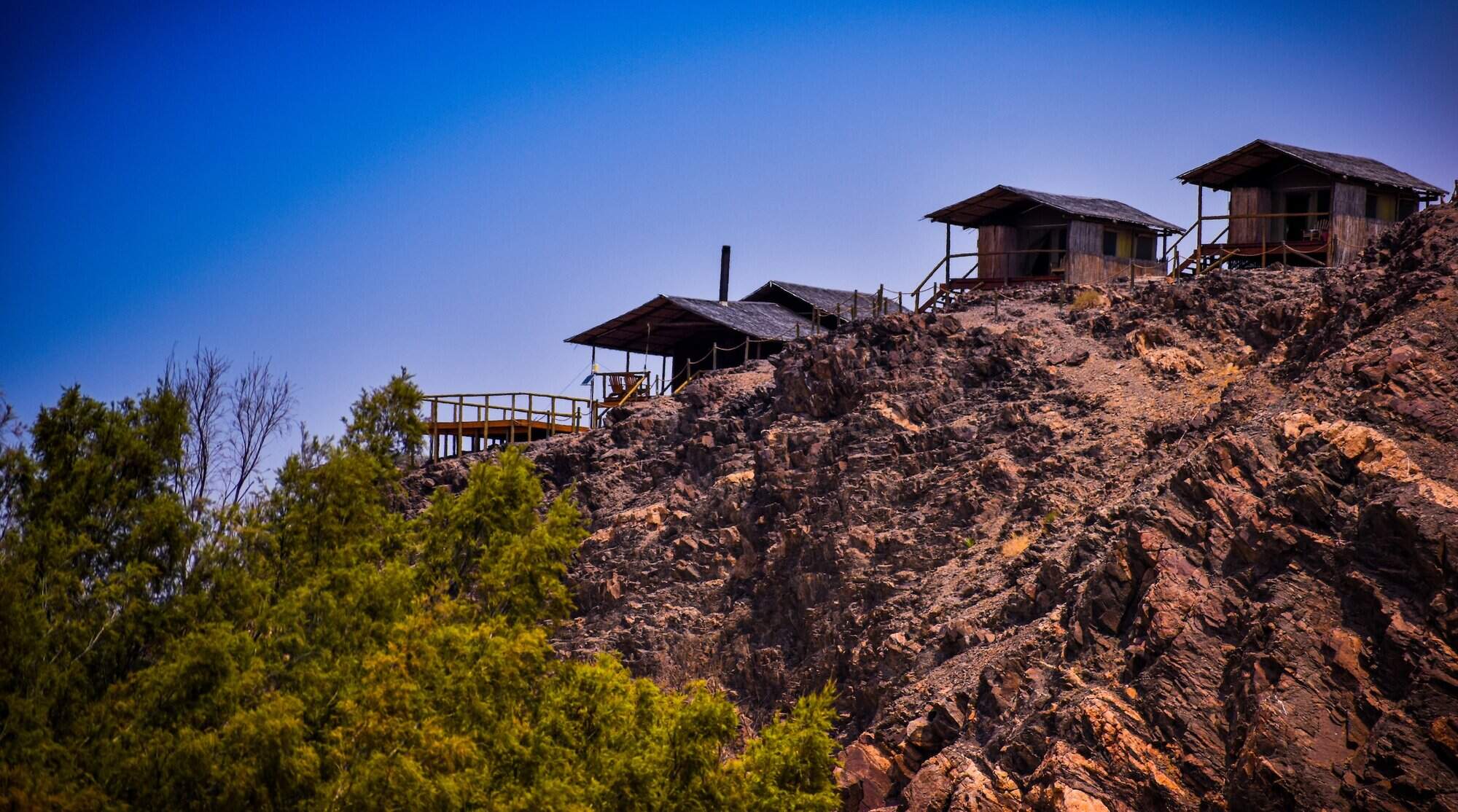
Leylandsdrift Camp
Used exclusively on the second night of a Skeleton Coast Safari, Leylandsdrift is in a beautiful location and is a good place to track desert-adapted elephants.
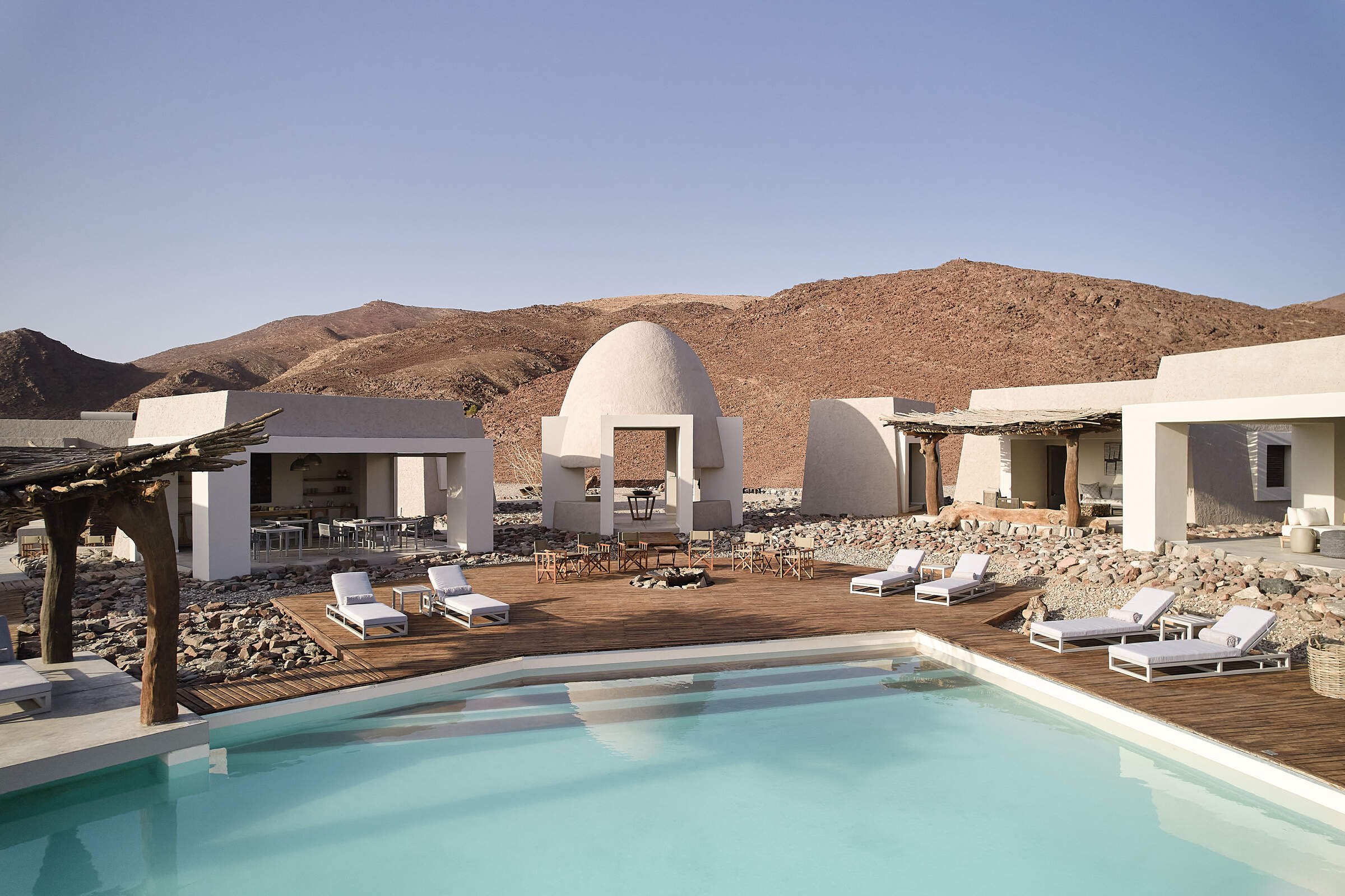
Okahirongo Elephant Lodge
Tucked away in Namibia's remote north-west, Okahirongo Elephant Lodge offers an unexpected level of luxury, with stunning views and plenty of activities.
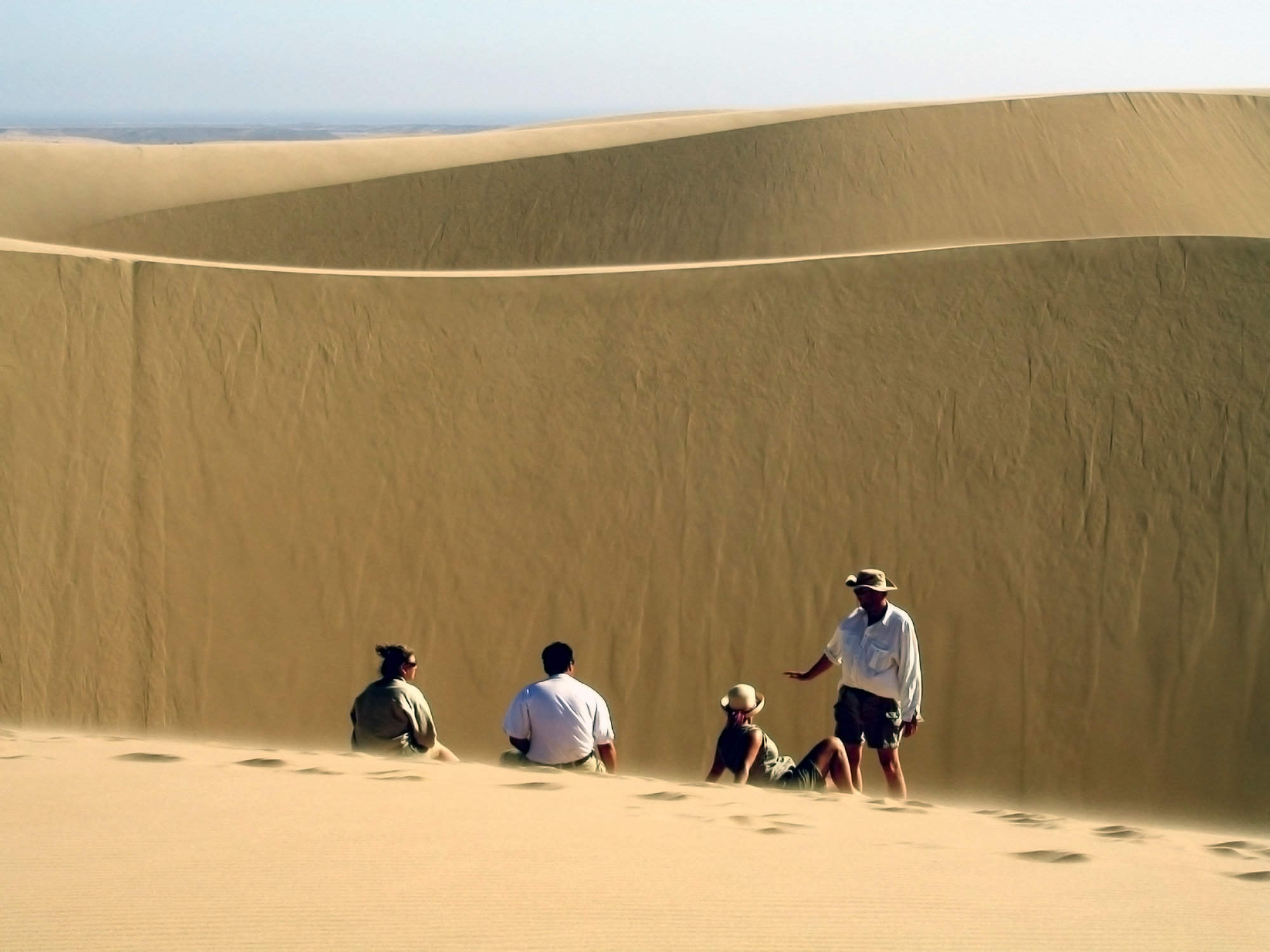
Kuidas Camp
Usually the first-night stop on a Schoeman Skeleton Coast safari, Kuidas is a very simple camp with stunning views of the Huab River valley.
When to go to Skeleton Coast & Kaokoland
Our month by month guide: What it's like to visit Kunene River Camp in Skeleton Coast & Kaokoland
Jan
Feb
Mar
Apr
May
Jun
Jul
Aug
Sep
Oct
Nov
Dec
Skeleton Coast & Kaokoland in January
The Skeleton Coast experiences its rainy season in January, though precipitation remains sparse in this desert environment. The Ugab River and other ephemeral rivers may briefly come to life, creating a spectacle in the usually arid landscape. Despite the rain, temperatures can still reach around 30°C/86°F.
The greening landscape makes a refreshing change, especially in desert dune seas. Migrant species arrive in force, making it an excellent time for birdwatching along the coast and in areas like the Swakop River. In the northern part of the Skeleton Coast National Park, where rains are more reliable, desert animals look healthy, with shiny coats, due to the abundance of food.
- Variable weather with fog common along coast
- Cape fur seal pups growing rapidly at colonies
- Wildlife looking well fed, with shiny coats
- Few tourists, low rates at lodges and camps
- Occasional thunderstorms inland from the coast
Our view
This is not a great time to visit
Weather in January
Skeleton Coast & Kaokoland in February
February is typically the wettest month on the Skeleton Coast, though rainfall remains patchy. The central highlands near the park's eastern border and the Kunene River region can see heavier rain. Some February days are clear and hot, while others are cooler with building clouds, sometimes culminating in short, spectacular thunderstorms. These storms can generate flash floods in the park's ephemeral rivers, bringing them dramatically to life.
The landscape feels green and alive, with insects and smaller animals more easily seen. Many birds and animals in the Skeleton Coast National Park are raising their young during this time. However, the formation of small pools in the bush and thicker vegetation can make it challenging to spot larger wildlife as they disperse with easy to access water, especially in the northern sections of the park.
- Coastal fog persists, creating eerie atmosphere
- Seal colonies bustling with activity
- Desert-adapted wildlife more dispersed
- Low tourist numbers, great deals available
- Possible inland thunderstorms, coast stays dry
Our view
This is not a great time to visit
Weather in February
Skeleton Coast & Kaokoland in March
March usually sees the Skeleton Coast's main rains tailing off, though precipitation varies across the park. Many days are clear with strong sun, while others may end with short, spectacular thunderstorms, particularly in the inland areas. These storms reduce in frequency as the month progresses.
The landscape often appears vivid and green, especially around the Ugab and Hoanib rivers. Many birds and animals are finishing raising their young, so smaller animals and insects are in evidence. In the northern part of the Skeleton Coast National Park, where rains are generally heavier, pools in the bush and thicker vegetation can make it difficult to spot larger animals. However, this is an excellent time to observe desert-adapted wildlife thriving in the temporarily lush environment.
- Weather becoming more stable along coast
- Seal pups learning to swim at Cape Cross
- Animals well-fed after inland rainy season
- Wildlife harder to spot in expansive desert
- Few tourists, ideal for solitude seekers
Our view
A good time to visit, with pros & cons
Weather in March
Skeleton Coast & Kaokoland in April
April typically brings dry weather to the Skeleton Coast, with an ever-decreasing chance of rain. Temperatures fall below their summer peak but remain pleasant and warm during the day. Nights might have a slight chill, especially in desert areas. The rains usually leave many parts of the park verdant and green, so animals are in fantastic condition, often with fast-growing young in attendance.
With less dust in the atmosphere, photographers can capture clear shots of spectacular landscapes and healthy animals. Stargazing becomes increasingly rewarding as the month progresses. In the northern sections of the Skeleton Coast National Park, water and food remain in plentiful supply, so finding big game can be trickier than later in the year. However, this is an excellent time for observing a wide variety of wildlife.
- Cooler nights, pleasant daytime temperatures
- Migrant birds begin departing the coast
- Desert flora starting to dry out inland
- Easter brings slight increase in visitors
- Clear conditions for sharp photographs
Our view
A good time to visit, with pros & cons
Weather in April
Skeleton Coast & Kaokoland in May
By May, the Skeleton Coast is usually drying out fast. If the rains have been good, the land remains green, but wildlife starts to congregate at more permanent water sources like the Hoanib and Uniab rivers. Typical days are warm with crisp, clear mornings and blue skies. Evenings are usually cool, with temperatures potentially dipping below 10°C/50°F overnight, especially in desert areas.
The air quality and clarity can be amazing, making this an ideal month for photography of the park's dramatic landscapes. Many lodges still charge low season prices, although some have started to introduce higher shoulder season rates. May's good-value rates, increasingly good wildlife sightings, beautiful landscapes, and crystal-clear air combine to make this one of the best months to visit the Skeleton Coast.
- Mild days, cool nights ideal for exploration
- Excellent clarity for coastal photography
- Wildlife starting to congregate near water
- Lodges still offer good rates
- Great sea kayaking as seal pups take to water
Our view
A very good time to visit
Weather in May
Skeleton Coast & Kaokoland in June
June brings dry conditions to the Skeleton Coast. Skies are blue and usually largely cloudless. Days are lovely, warm, and dry; nights are cold, sometimes below freezing in desert areas. Most swimming pools at lodges are outdoors and too cold for all except the very dedicated. Warm clothing is essential for early morning and late evening nature drives.
In the northern part of the Skeleton Coast National Park, wildlife viewing enters its dry-season pattern, focusing around water sources. Photographers come to the area for the superb air clarity, with minimal dust or smoke. The Cape Cross Seal Colony becomes increasingly active as the young seals join parents on fishing trips. Historically, June rates have been low, but with increasing popularity, many lodges now count it amongst their high-season months.
- Clear, bright days with cold nights
- Prime time for scenic flights over coastline
- Wildlife gravitating to scarce water sources
- Most lodges move to high season rates
- Fishing season kicks off with great catch opportunities
Our view
A very good time to visit
Weather in June
Skeleton Coast & Kaokoland in July
July brings usually warm daytime temperatures upwards of 20°C/68°F to the Skeleton Coast, along with good sightings of desert-adapted wildlife such as elephants, giraffe, oryx, jackals and perhaps even lion. Watching elephants climb hillside dunes is often a highlight! Rain is very unusual, and clear skies make for great photographs of the stark desert landscapes.
Once the sun sets, temperatures cool rapidly, bringing cold nights that may dip below freezing in desert areas. Visitors should dress in layers and be prepared for cold early-morning and late-afternoon drives. Across the park, lodges charge high season rates; many are fully booked a year or more in advance, especially during European school holidays from the latter half of July to late August.
- Dry days, cold nights perfect for stargazing
- Whale watching season begins off the coast
- Excellent time to view desert wildlife
- Peak season rates at coastal accommodation options
- Cool temperatures for nature walks
Our view
A very good time to visit
Weather in July
Skeleton Coast & Kaokoland in August
August marks the height of winter on the Skeleton Coast. Expect cloudless skies and plenty of warm sun during the day, but nights can drop to freezing in desert areas. Visitors should dress in layers and bring warm clothes for chilly mornings and evenings. It's usually been 3-4 months since any significant rain, so the land is dry with only specialist desert plants standing out in their greenery. Many landscapes appear sparse and harsh, showcasing the raw beauty of the Skeleton Coast. Desert-adapted wildlife stays close to available water sources, helping to guarantee good animal sightings, particularly in the northern part of the park.
August is the most popular time to visit, especially for families. Advance booking is essential, often over a year in advance, for stays at the best lodges within the Skeleton Coast National Park.
- Clear skies, cold nights, warm days
- Marine mammals often seen on boat cruises
- Wildlife concentrated close to water points
- Busier season, advanced bookings recommended
- Ideal conditions for coastal adventure activities
Our view
Fantastic: the very best time to visit
Weather in August
Skeleton Coast & Kaokoland in September
September brings blue, cloudless skies and fantastic desert-adapted wildlife viewing to the Skeleton Coast. Rain is almost unheard of during this month. As September progresses, both days and nights get warmer. In some areas, daily maximums can reach the low 30s Celsius / mid 80s Fahrenheit, although low humidity ensures this feels comfortable.
The air becomes dustier, occasionally augmented by smoke from distant fires, creating a hazy atmosphere that can challenge photographers - though atmospheric sunsets are a delight. In the Skeleton Coast National Park, animals stay close to remaining water sources, making September one of the best months for viewing desert animals such as elephants, oryx and even lion. Consequently, September is one of the Skeleton Coast's most popular months for visitors. Seeing how remote communities exist in this barren setting is often a highlight.
- Quickly warming temperatures, still clear skies
- Fascinating insights to Himba communities
- Fantastic desert wildlife viewing in river valleys
- High season rates, lodges often fully booked
- Occasionally dusty skies create spectacular sunsets
Our view
Fantastic: the very best time to visit
Weather in September
Skeleton Coast & Kaokoland in October
October is usually the hottest and driest month on the Skeleton Coast. Temperatures build as the month progresses; towards the end, daily highs may exceed 40°C/104°F, though the low humidity makes even this heat bearable. In exceptional years, isolated rain showers may fall in late October. More usually, the end of the dry season sees wildlife watching at its best, particularly in the northern part of the Skeleton Coast National Park. Sightings of unusual species such as brown hyena and desert lion become more regular as the animals have limited water sources.
October is popular among landscape and unique wildlife enthusiasts and commands peak-season prices, even if dust and smoke may make the air hazy, challenging photographers. Visitor numbers can fade towards the end of the month, allowing a window for last-minute bookings at some lodges.
- Hot, dry conditions prevail along coast
- Marine wildlife abundant in coastal waters
- Exceptional desert game viewing in Hoanib area
- Still peak visitor time, book accommodations early
- Dining under stars on balmy nights in the desert is special
Our view
A very good time to visit
Weather in October
Skeleton Coast & Kaokoland in November
November is unpredictable on the Skeleton Coast; sometimes dry and hot, sometimes cloudier and cooler. Typically, mornings are hot and cloudless, with clouds appearing in the afternoon. Humidity builds and eventually breaks, resulting in spectacular thunderstorms that bring convection rainfall in late afternoons. Such storms are typically sparsely distributed and highly localised, being completely absent from the most arid desert areas. Places that do get good rain, like the Hoanib and Uniab river valleys, flush green with a tangible feeling of new life, softening the harsh landscapes.
Many mammals give birth to their young during this period. Once the rains come, wildlife disperses in search of food, and game viewing in the northern part of the Skeleton Coast National Park becomes more challenging. However, this is a great time for birdwatchers, with migrant species arriving in breeding plumage.
- Variable weather as summer approaches
- Cape fur seals begin breeding season
- Wildlife dispersing with first inland rains
- Shoulder season begins, rates become moderate
- Landscapes transforming with possible rain
Our view
A good time to visit, with pros & cons
Weather in November
Skeleton Coast & Kaokoland in December
December is often a drier period between the short and long rainy season. Clear mornings can give way to building clouds and spectacular evening thunderstorms, but often with little to no rain. These storms make for atmospheric skies and an interesting time for photographers. But even relatively short showers enable plant life to erupt, carpeting this thirsty land in green and providing food for the young animals as they grow. Animals disperse widely across the Skeleton Coast National Park, which can make game viewing more challenging than in the dry season. Many birds are breeding and sporting their most colourful plumage.
Christmas and New Year fall within local summer holidays, so accommodations can be surprisingly busy, especially in and around the park's coastal areas where temperatures are cooler.
- Warmer temperatures, chance of coastal fog
- Seal breeding season peaks at colonies
- Desert-adapted wildlife often have young
- Holiday period brings more visitors to coast
- Possible inland rains create lush landscapes
Our view
This is not a great time to visit
Weather in December

Looking for inspiration on where to travel next?
Visit our trip chooser to explore your options and find inspiration for your perfect African adventure
Inspire me